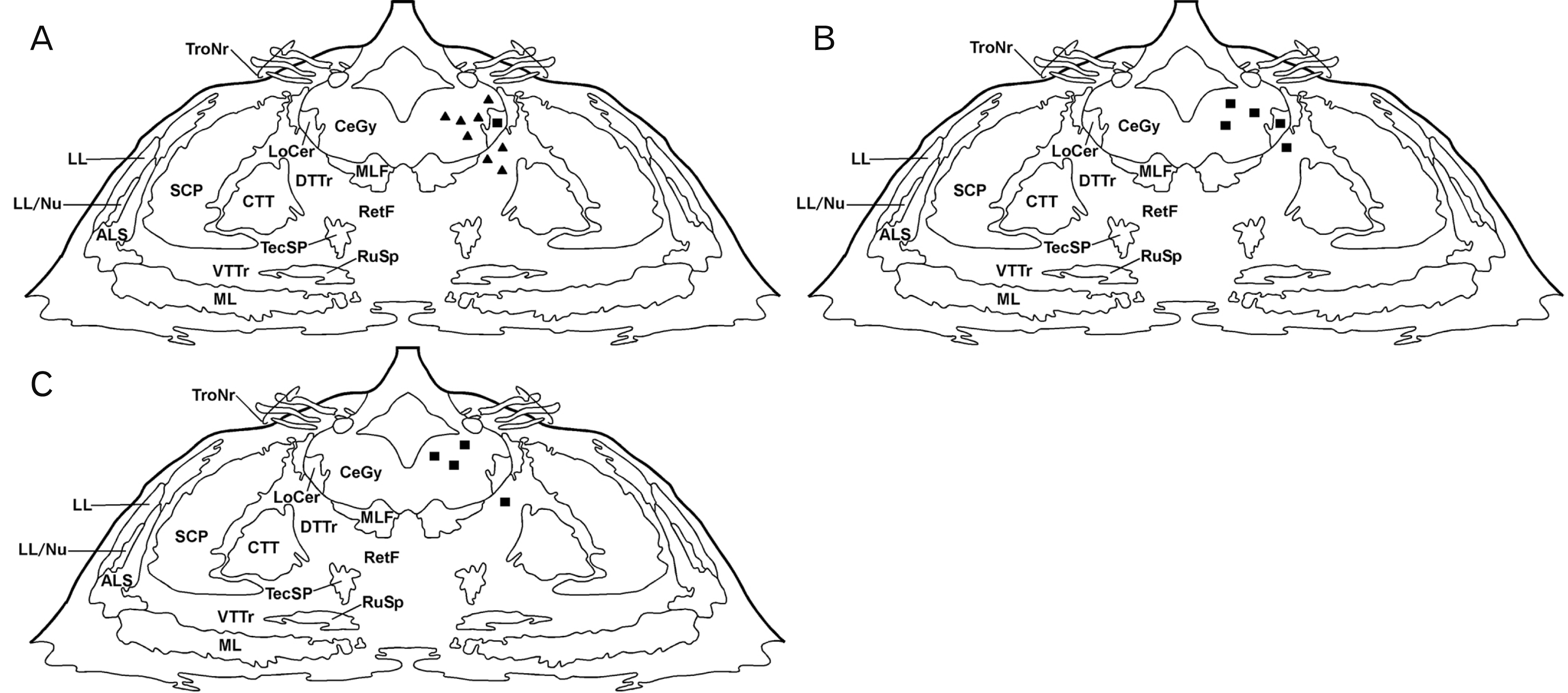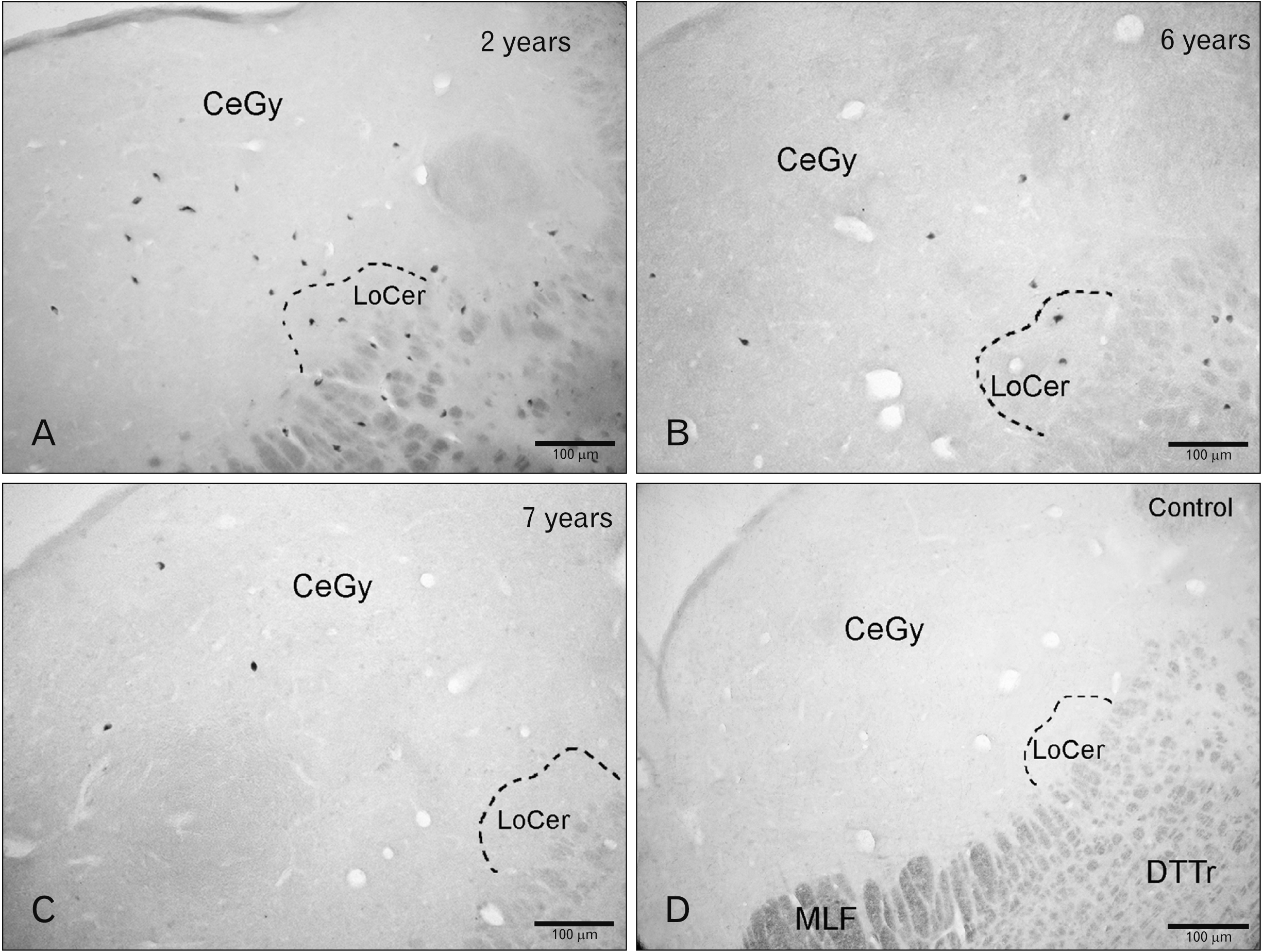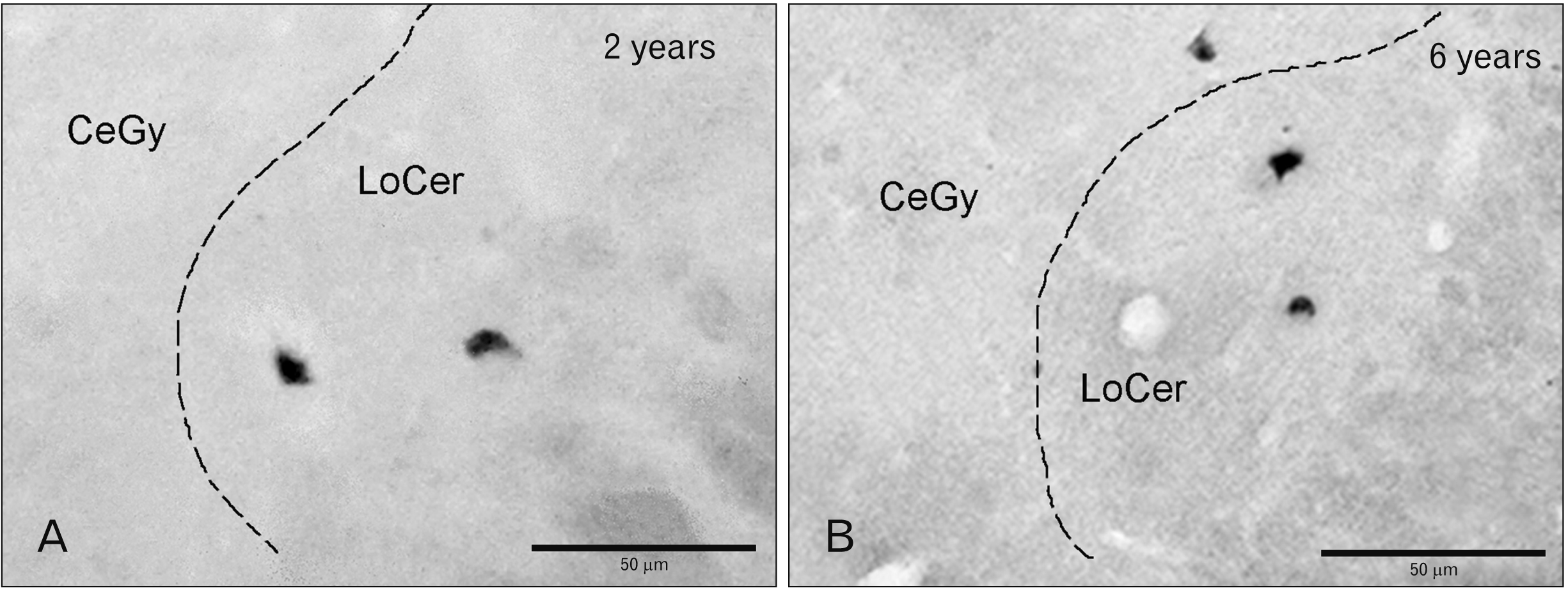1. Abdollahifar MA, Azad N, Sajadi E, Shams Mofarahe Z, Zare F, Moradi A, Rezaee F, Gholamin M, Abdi S. 2019; Vitamin C restores ovarian follicular reservation in a mouse model of aging. Anat Cell Biol. 52:196–203. DOI:
10.5115/acb.2019.52.2.196. PMID:
31338237. PMCID:
PMC6624328.

2. Hong JM, Kim JH, Kang JS, Lee WJ, Hwang YI. 2016; Vitamin C is taken up by human T cells via sodium-dependent vitamin C transporter 2 (SVCT2) and exerts inhibitory effects on the activation of these cells
in vitro. Anat Cell Biol. 49:88–98. DOI:
10.5115/acb.2016.49.2.88. PMID:
27382510. PMCID:
PMC4927435.
3. Coveñas R, Mangas A, Bodet D, Duleu S, Marcos P, Karakas B, Geffard M. 2011; Frontiers in vitamin research: new antibodies, new data. ScientificWorldJournal. 11:1226–1242. DOI:
10.1100/tsw.2011.115. PMID:
21666992. PMCID:
PMC5720100.

4. Coveñas R, Mangas A, Bodet D, Duleu S, Marcos P, Geffard M. Jackson CM, editor. 2011. Vitamin C in the monkey brain. Vitamin C: Nutrition, Side Effects, and Supplements. Nova Science Publishers;New York: p. 275–88.
5. Coveñas R, González-Fuentes J, Rivas-Infante E, Lagartos-Donate MJ, Mangas A, Geffard M, Arroyo-Jiménez MM, Cebada-Sánchez S, Insausti R, Marcos P. 2015; Developmental study of vitamin C distribution in children's brainstems by immunohistochemistry. Ann Anat. 201:65–78. DOI:
10.1016/j.aanat.2015.06.001. PMID:
26226232.

6. Mangas A, Coveñas R, Geffard K, Geffard M, Marcos P, Insausti R, Dabadie MP. 2004; Folic acid in the monkey brain: an immunocytochemical study. Neurosci Lett. 362:258–61. DOI:
10.1016/j.neulet.2004.03.034. PMID:
15158027.

7. Mangas A, Coveñas R, Geffard K, Geffard M, Marcos P, Insausti R, Glaize G, Dabadie MP. 2006; Riboflavin-like inmunoreactive fibers in the monkey brain. Anat Embryol (Berl). 211:267–72. DOI:
10.1007/s00429-006-0080-6. PMID:
16456676.

8. Mangas A, Coveñas R, Geffard K, Geffard M, Marcos P, Insausti R, Dabadie MP. 2006; Thiamine-like fibers in the monkey brain: an immunocytochemical study. Life Sci. 79:1121–8. DOI:
10.1016/j.lfs.2006.03.017. PMID:
16624330.

9. Mangas A, Coveñas R, Bodet D, Duleu S, Marcos P, Geffard M. 2009; Vitamins in the monkey brain: an immunocytochemical study. J Chem Neuroanat. 38:1–8. DOI:
10.1016/j.jchemneu.2009.05.007. PMID:
19477264.

10. Mangas A, Bodet D, Duleu S, Yajeya J, Geffard M, Coveñas R. 2012; Direct visualization of retinoic acid in the rat hypothalamus: an immunohistochemical study. Neurosci Lett. 509:64–8. DOI:
10.1016/j.neulet.2011.12.053. PMID:
22230896.

11. Mangas A, Yajeya J, Gonzalez N, Husson M, Geffard M, Coveñas R. 2016; Detection of pantothenic acid-immunoreactive neurons in the rat lateral septal nucleus by a newly developed antibody. Folia Histochem Cytobiol. 54:186–192. DOI:
10.5603/FHC.a2016.0024. PMID:
27966211.

12. Chang S, Lu X, Wang S, Wang Z, Huo J, Huang J, Shangguan S, Li S, Zou J, Bao Y, Guo J, Wang F, Niu B, Zhang T, Qiu Z, Wu J, Wang L. 2019; The effect of folic acid deficiency on FGF pathway via Brachyury regulation in neural tube defects. FASEB J. 33:4688–702. DOI:
10.1096/fj.201801536R. PMID:
30592646.
13. Li W, Ma Y, Li Z, Lv X, Wang X, Zhou D, Luo S, Wilson JX, Huang G. 2019; Folic acid decreases astrocyte apoptosis by preventing oxidative stress-induced telomere attrition. Int J Mol Sci. 21:62. DOI:
10.3390/ijms21010062. PMID:
31861819. PMCID:
PMC6981374.

14. Liu H, Cao J, Zhang H, Qin S, Yu M, Zhang X, Wang X, Gao Y, Wilson JX, Huang G. 2013; Folic acid stimulates proliferation of transplanted neural stem cells after focal cerebral ischemia in rats. J Nutr Biochem. 24:1817–22. DOI:
10.1016/j.jnutbio.2013.04.002. PMID:
23850087.

15. Pei P, Cheng X, Yu J, Shen J, Li X, Wu J, Wang S, Zhang T. 2019; Folate deficiency induced H2A ubiquitination to lead to downregulated expression of genes involved in neural tube defects. Epigenetics Chromatin. 12:69. DOI:
10.1186/s13072-019-0312-7. PMID:
31722724. PMCID:
PMC6852770.

16. Zhao Y, Huang G, Chen S, Gou Y, Dong Z, Zhang X. 2016; Folic acid deficiency increases brain cell injury via autophagy enhancement after focal cerebral ischemia. J Nutr Biochem. 38:41–9. DOI:
10.1016/j.jnutbio.2016.08.009. PMID:
27721115.

17. Liu H, Tian T, Qin S, Li W, Zhang X, Wang X, Gao Y, Huang G. 2015; Folic acid deficiency enhances abeta accumulation in APP/PS1 mice brain and decreases amyloid-associated miRNAs expression. J Nutr Biochem. 26:1502–8. DOI:
10.1016/j.jnutbio.2015.07.020. PMID:
26345540.

18. Zhuo JM, Praticò D. 2010; Acceleration of brain amyloidosis in an Alzheimer's disease mouse model by a folate, vitamin B6 and B12-deficient diet. Exp Gerontol. 45:195–201. DOI:
10.1016/j.exger.2009.12.005. PMID:
20005283. PMCID:
PMC2826592.

19. Haghdoost-Yazdi H, Fraidouni N, Faraji A, Jahanihashemi H, Sarookhani M. 2012; High intake of folic acid or complex of B vitamins provides anti-Parkinsonism effect: no role for serum level of homocysteine. Behav Brain Res. 233:375–81. DOI:
10.1016/j.bbr.2012.05.011. PMID:
22610053.

20. ivastav S Sr, Singh SK, Yadav AK, ikrishna S Sr. 2015; Folic acid supplementation rescues anomalies associated with knockdown of parkin in dopaminergic and serotonergic neurons in Drosophila model of Parkinson's disease. Biochem Biophys Res Commun. 460:780–5. DOI:
10.1016/j.bbrc.2015.03.106. PMID:
25824034.
22. Das BC, Thapa P, Karki R, Das S, Mahapatra S, Liu TC, Torregroza I, Wallace DP, Kambhampati S, Van Veldhuizen P, Verma A, Ray SK, Evans T. 2014; Retinoic acid signaling pathways in development and diseases. Bioorg Med Chem. 22:673–83. DOI:
10.1016/j.bmc.2013.11.025. PMID:
24393720. PMCID:
PMC4447240.

24. Luo T, Wagner E, Crandall JE, Dräger UC. 2004; A retinoic-acid critical period in the early postnatal mouse brain. Biol Psychiatry. 56:971–80. DOI:
10.1016/j.biopsych.2004.09.020. PMID:
15601608.

25. Kane MA, Chen N, Sparks S, Napoli JL. 2005; Quantification of endogenous retinoic acid in limited biological samples by LC/MS/MS. Biochem J. 388(Pt 1):363–9. DOI:
10.1042/BJ20041867. PMID:
15628969. PMCID:
PMC1186726.

26. Kane MA, Folias AE, Wang C, Napoli JL. 2008; Quantitative profiling of endogenous retinoic acid
in vivo and
in vitro by tandem mass spectrometry. Anal Chem. 80:1702–8. DOI:
10.1021/ac702030f. PMID:
18251521. PMCID:
PMC4086453.
27. Duque E, Mangas A, Salinas P, Díaz-Cabiale Z, Narváez JA, Coveñas R. 2013; Mapping of alpha-neo-endorphin- and neurokinin B-immunoreactivity in the human brainstem. Brain Struct Funct. 218:131–49. DOI:
10.1007/s00429-012-0388-3. PMID:
22318412.

28. Guntern R, Vallet PG, Bouras C, Constantinidis J. 1989; An improved immunohistostaining procedure for peptides in human brain. Experientia. 45:159–61. DOI:
10.1007/BF01954858. PMID:
2646140.

29. Shi SR, Taylor CR. Shi SR, Taylor CR, editors. 2010. Standardization of immunohistochemistry based on antigen retrieval technique. Antigen Retrieval Immunohistochemistry Based Research and Diagnostics. John Wiley & Sons;Hoboken: p. 87–99. DOI:
10.1002/9780470875612.ch5.

30. Coveñas R, González-Fuentes J, Rivas-Infante E, Lagartos-Donate MJ, Cebada-Sánchez S, Arroyo-Jiménez MM, Insausti R, Marcos P. 2014; Developmental study of the distribution of hypoxia-induced factor-1 alpha and microtubule-associated protein 2 in children's brainstem: comparison between controls and cases with signs of perinatal hypoxia. Neuroscience. 271:77–98. DOI:
10.1016/j.neuroscience.2014.04.018. PMID:
24780770.

31. Haines DE. 2012. Neuroanatomy: an atlas of structures, sections and systems. 2nd ed. Urban & Schwartzenberg;Baltimore:
32. Broeke J, Mateos J, Pascau J. 2015. Image processing with ImageJ. 2nd ed. Packt Publishing;Birmingham:
33. Sánchez ML, Díaz-Cabiale Z, Narváez JA, Manso B, Salinas P, Rivada E, Smith V, Coveñas R. 2016; Mapping of methionine-enkephalin-arg6-gly7-leu8 in the human diencephalon. Neuroscience. 334:245–58. DOI:
10.1016/j.neuroscience.2016.08.010. PMID:
27531857.

34. Coveñas R, Martin F, Belda M, Smith V, Salinas P, Rivada E, Diaz-Cabiale Z, Narvaez JA, Marcos P, Tramu G, Gonzalez-Baron S. 2003; Mapping of neurokinin-like immunoreactivity in the human brainstem. BMC Neurosci. 4:3. DOI:
10.1186/1471-2202-4-3. PMID:
12617753. PMCID:
PMC149367.
35. Morse NL. 2012; Benefits of docosahexaenoic acid, folic acid, vitamin D and iodine on foetal and infant brain development and function following maternal supplementation during pregnancy and lactation. Nutrients. 4:799–840. DOI:
10.3390/nu4070799. PMID:
22852064. PMCID:
PMC3407995.

36. Dean JH, Pauly R, Stevenson RE. 2020; Neural tube defects and associated anomalies before and after folic acid fortification. J Pediatr. 226:186–94.E4. DOI:
10.1016/j.jpeds.2020.07.002. PMID:
32634404.

38. Sable P, Dangat K, Kale A, Joshi S. 2011; Altered brain neurotrophins at birth: consequence of imbalance in maternal folic acid and vitamin B₁₂ metabolism. Neuroscience. 190:127–34. DOI:
10.1016/j.neuroscience.2011.05.010. PMID:
21640168.
39. Kim GB, Chen Y, Kang W, Guo J, Payne R, Li H, Wei Q, Baker J, Dong C, Zhang S, Wong PK, Rizk EB, Yan J, Yang J. 2018; The critical chemical and mechanical regulation of folic acid on neural engineering. Biomaterials. 178:504–16. DOI:
10.1016/j.biomaterials.2018.03.059. PMID:
29657092. PMCID:
PMC6328061.

40. Radziejewska A, Chmurzynska A. 2019; Folate and choline absorption and uptake: their role in fetal development. Biochimie. 158:10–9. DOI:
10.1016/j.biochi.2018.12.002. PMID:
30529042.

41. Song X, Fan X, Li X, Kennedy D, Pang L, Quan M, Chen X, Gao J, Zhang W, Zhang J, Lv L. 2014; Serum levels of BDNF, folate and homocysteine: in relation to hippocampal volume and psychopathology in drug naïve, first episode schizophrenia. Schizophr Res. 159:51–5. DOI:
10.1016/j.schres.2014.07.033. PMID:
25128453.

42. Cheng M, Yang L, Dong Z, Wang M, Sun Y, Liu H, Wang X, Sai N, Huang G, Zhang X. 2019; Folic acid deficiency enhanced microglial immune response via the Notch1/nuclear factor kappa B p65 pathway in hippocampus following rat brain I/R injury and BV2 cells. J Cell Mol Med. 23:4795–807. DOI:
10.1111/jcmm.14368. PMID:
31087489. PMCID:
PMC6584545.







 PDF
PDF Citation
Citation Print
Print





 XML Download
XML Download